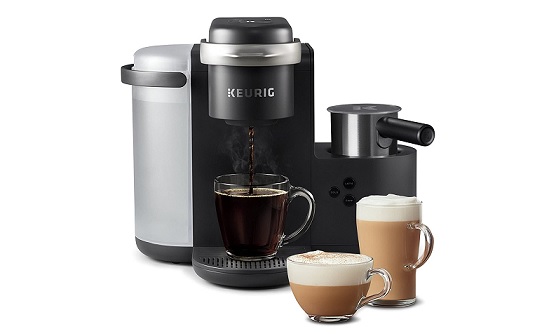If you use a Keurig coffee maker, you already know quickly it makes a delicious, steaming hot cup of coffee to brighten your mornings. The simple, classy design also adds to the general appeal of this gorgeous machine. But that is not why you are here. You’re here to learn how to descale your Keurig coffee maker. Well, you’re not alone. Smart people like you are doing the same thing for a very important reason.
When a coffee maker serves you for days to weeks and to months, you begin to notice some changes. One of them is the taste and quality of your brew.
All you really want is a rich-tasting beverage to start the day. But after prolonged use, your Keurig coffee maker is in no condition for that. Most of the tap water available to you is hard water. Hard water is good and fine for making coffee. The problem is the dissolved minerals in it.
As the heater in your coffee maker boils the water, the hot water passes through a pipe that takes water all the way to the carafe. The thing is, as the water flows through, mineral deposits are left behind and tend to clog the pipes, which in turn prevents a good dose of water from getting to the coffee.

How to Descale a Keurig Coffee Maker
Coffee needs to be in contact with a good quantity of water for a reasonable amount of time if you want a good brew. If your coffee maker needs descaling, you will notice that it doesn’t taste as good as it used to be.
Still, there’s another thing you may observe. The indicator lights on your device may be acting up and your machine may be doing strange things. Don’t throw in the towel yet. Or at least, try descaling it first.
Option 1: Keurig Descaling Solution
Many Keurig coffee makers come with a descaling solution. If yours is one of them, use that solution. First, empty your machine’s water tank. Detach the tank and take it to the sink for a good old washing with soap and water, then switch off the device. Reinstall the tank and pour the Keurig solution into it until it is filled to the halfway point. Pour some clean water into that tank until it is filled up. You’re better off using bottled water or filtered water – that way you’ll get the best results.
At this point, put a ceramic mug in the place where your carafe should be. You’ve already washed it, so it won’t make any sense to let sediment-filled water get into your clean carafe. Yes, whatever container you use will get hot and dirty as the descaling continues.
Turn on your coffee maker while at the same time opening it to check that there is no K pod or K-cup inside of it. After checking, close it. It’s time to get the party started. As soon as you close it, the indicator light will come on. Select the option of the biggest cup among the buttons on display and let the mixture flow into the ceramic mug you’ve put at the bottom. When the mug is full, stop the machine and empty the content of the cup into a sink. Replace the mug and let the machine run until the mug fills up again, then throw the water away.
Repeat this process as many times as needed for the “Add water” indicator light to come on. At this stage, let the coffee maker rest for 30 minutes to let the Keurig solution do its work inside the machine. At the end of the time period, take out the water tank and wash it with some soap and water in the kitchen sink.
Next, get some filtered water or bottled water and pour it inside the tank. Shut the tank and select the largest cup among the buttons on the unit and allow the device to get to work. It should run until the mug is filled with used water. Empty that mug in the sink and repeat the process about 12 times to thoroughly rinse the machine.
Your Keurig coffee maker should be spotless now. Go ahead and make yourself a brew to celebrate. You may want to use a clean, damp rag to wipe the body of your device first.
Option 2: White Vinegar
In case you don’t want to use the Keurig solution, there is another option. It is distilled white vinegar. Empty the reservoir of any water and remove any leftover pods in the system. Fill the tank with one part distilled vinegar and one part clean water.
It’s time to choose the largest brew cycle and put an empty mug where the carafe should be. Let the machine run until the mug is full. Throw out the water in the mug and let it fill up again. When the “Add water” indicator light comes on, leave the machine to rest for 30 minutes. After that, flush with clean water by getting some fresh water into the tank. Run another brew cycle so the water can wash off the remaining vinegar in the device.
All that vinegar must be rinsed out. It’s really not the kind of taste you want in your coffee. This is why the vinegar option is not the most pleasant one, even though it is effective.
Descaling is a time-consuming process. Having said that it is one that is necessary if you want to keep making delicious, fresh coffee day after day. Besides being a pleasant-tasting beverage, coffee has many health benefits. It is known to reduce the occurrence of heart disease and obesity. It also increases muscle strength and endurance. Studies have shown that drinking coffee in moderation can help to prevent different kinds of cancers. Who wouldn’t want that in their life?
Still, the bottom line is this: Lovers of the brew will always find one or more reasons to continue with their coffee drinking habit. The rest of the world will have to live with that. Don’t you agree?







